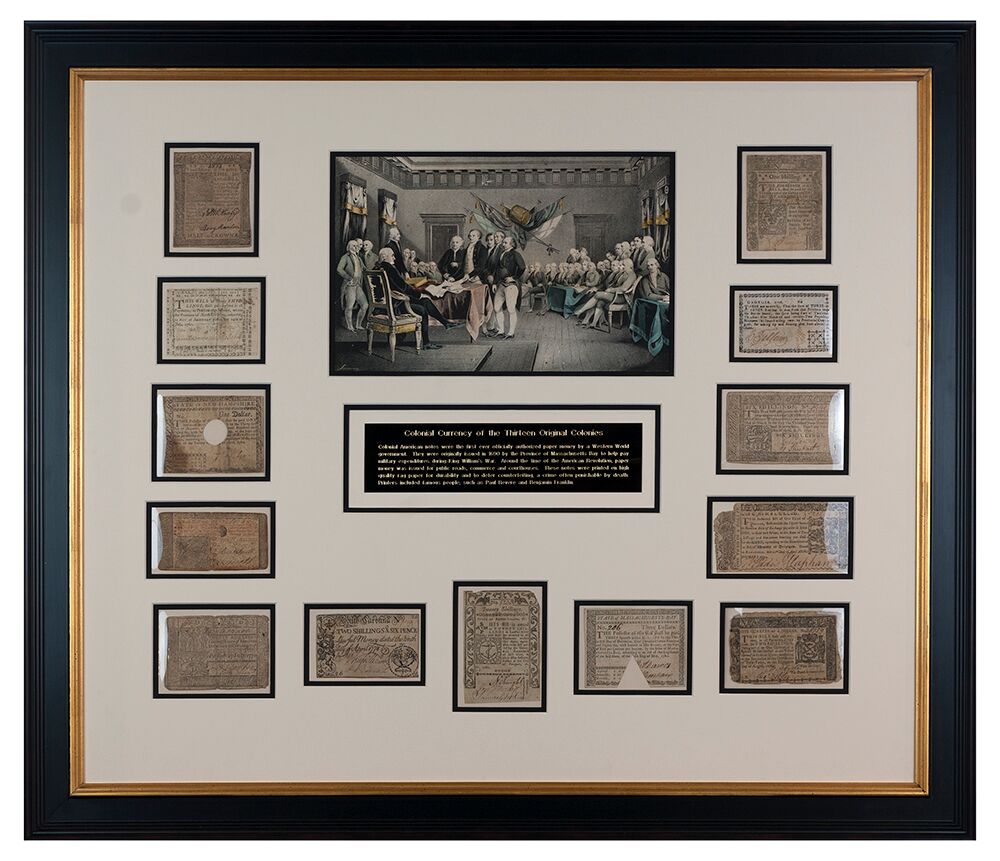Paper Money of the Thirteen Original Colonies

Do you remember as a child going to a historic area such as Colonial Willliamsburg and getting drawn into the colonial environment? The various historical buildings, daily reenactments and character impersonators who spoke with the tourists sure brought fond memories.
Then, before you would leave the colonial grounds, you would stop at a gift shop and peruse the various souvenirs that reminds you of your visit. Notice how such shops are located as you exit the touring area? They know the time to sell their items is as you exit the historical area while the excitement is still lingering with you.
A popular souvenir item has been reproduction paper money from the various colonies. They were printed on aged looking paper and were fascinating to look at every now and then. They had the look of being soaked in tea for a while to give them that old look.
The first authorized paper currency printed by a western world government was the Province of Massachusetts-Bay in 1690. Soon, other colonies followed issuing their own currency. Mind you, these colonies were under the British rule and, therefore, had to answer to the British government regarding their printing currency, most of which had no real guarantee (backing).
There were times when paper money was depreciated and thus their value or worth declined. This, in turn, led to hostilities with the British creditors. The British government passed laws restricting issuance of paper money, including the infamous 1765 Stamp Act which led to the start of the American Revolution.
One of the most popular framed ensembles we have sold through the years was a complete set of genuine authentic hand signed currency from all thirteen original colonies. Included would be an illustration of the signing of the Declaration of Independence and a short plaque describing the currency.
Each piece of paper money bore a genuine signature of a prominent colonist from that particular colony or state. The currency was printed in various denominations and issued to fund public roads, courthouses and any other public works project. Military expenditures required a large quantity of notes to printed.
Imagine going back to the colonial era and meeting the famous early colonists who touched and handled these notes over 200 years ago. These notes definitely saw a lot of interesting occurrences back in the day.
Notice in this particular framed set of currency there are some notes that have holes or slashes/cuts? These marks indicated the notes were redeemed or turned in when tendered.
Some of the paper money was printed by Paul Revere or Benjamin Franklin. Some of the paper money was even signed by signers of the Declaration of Independence or U.S. Constitution. Many of the notes had the phrase To Counterfeit is Death printed on the back.
